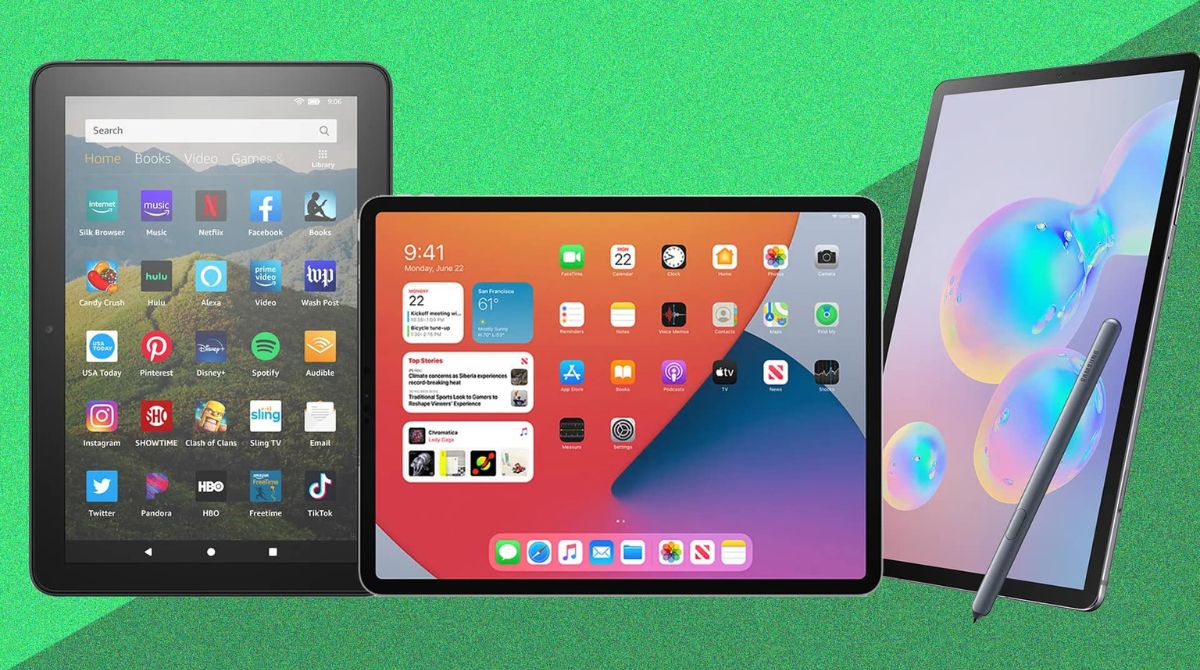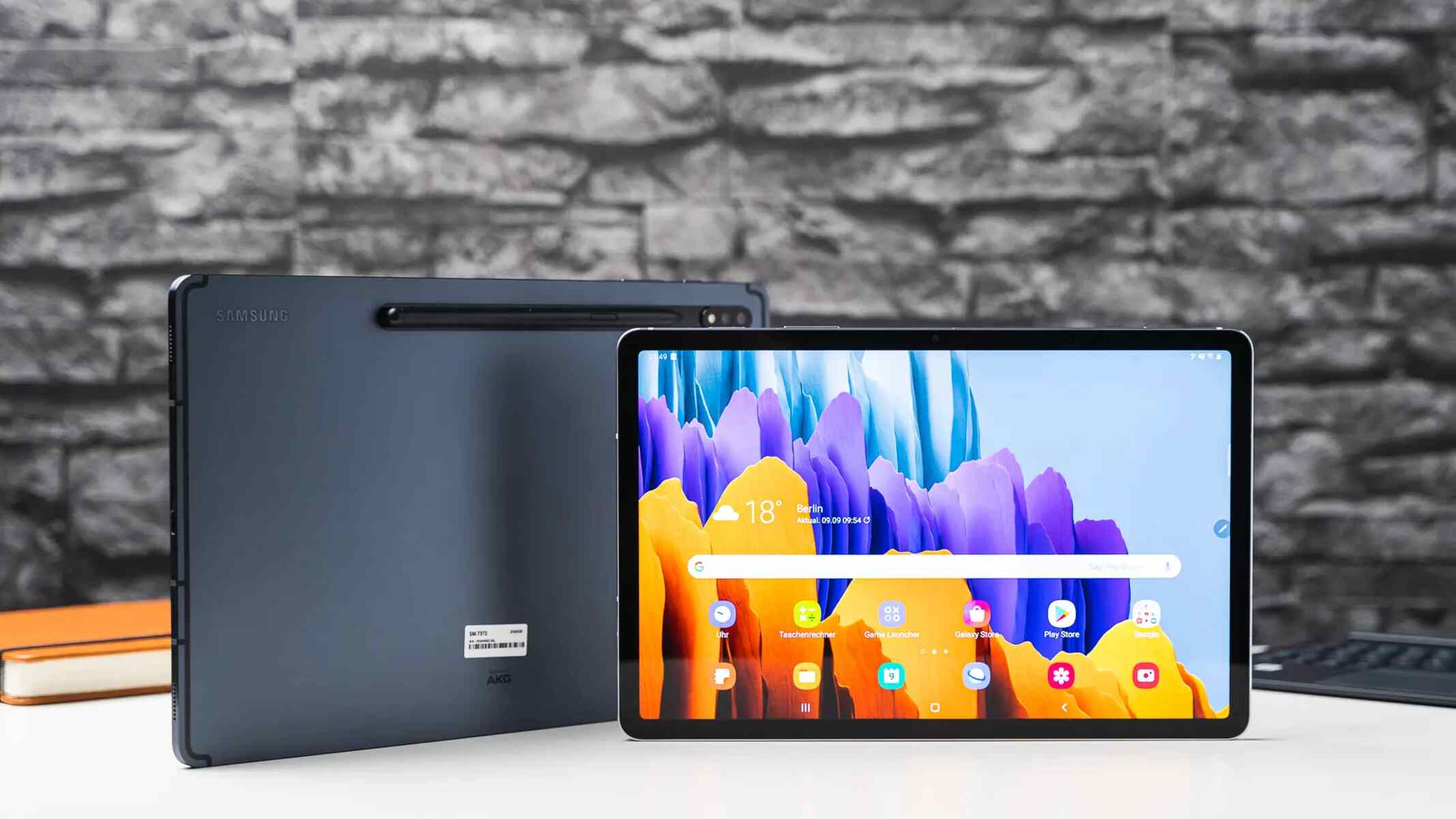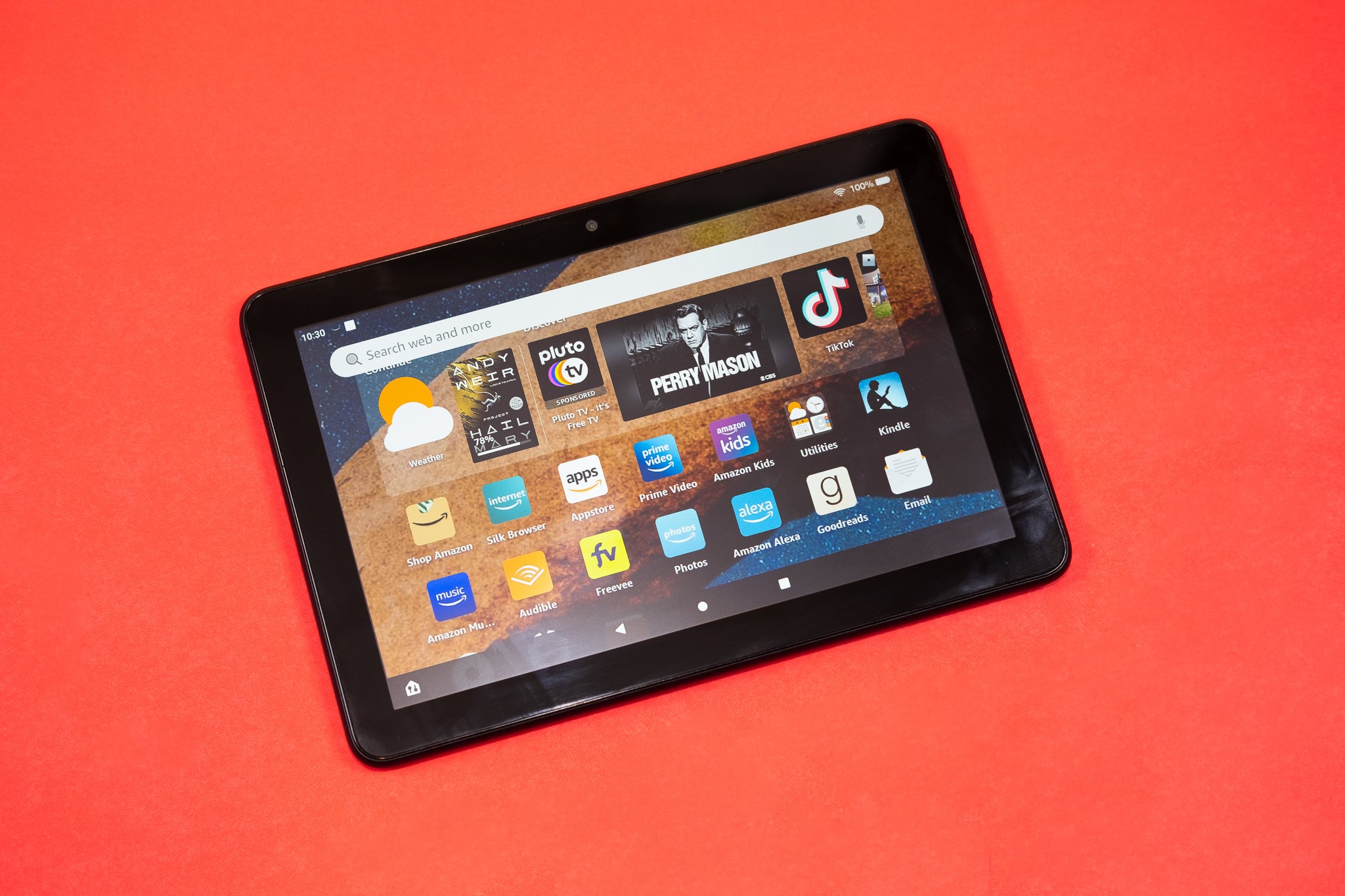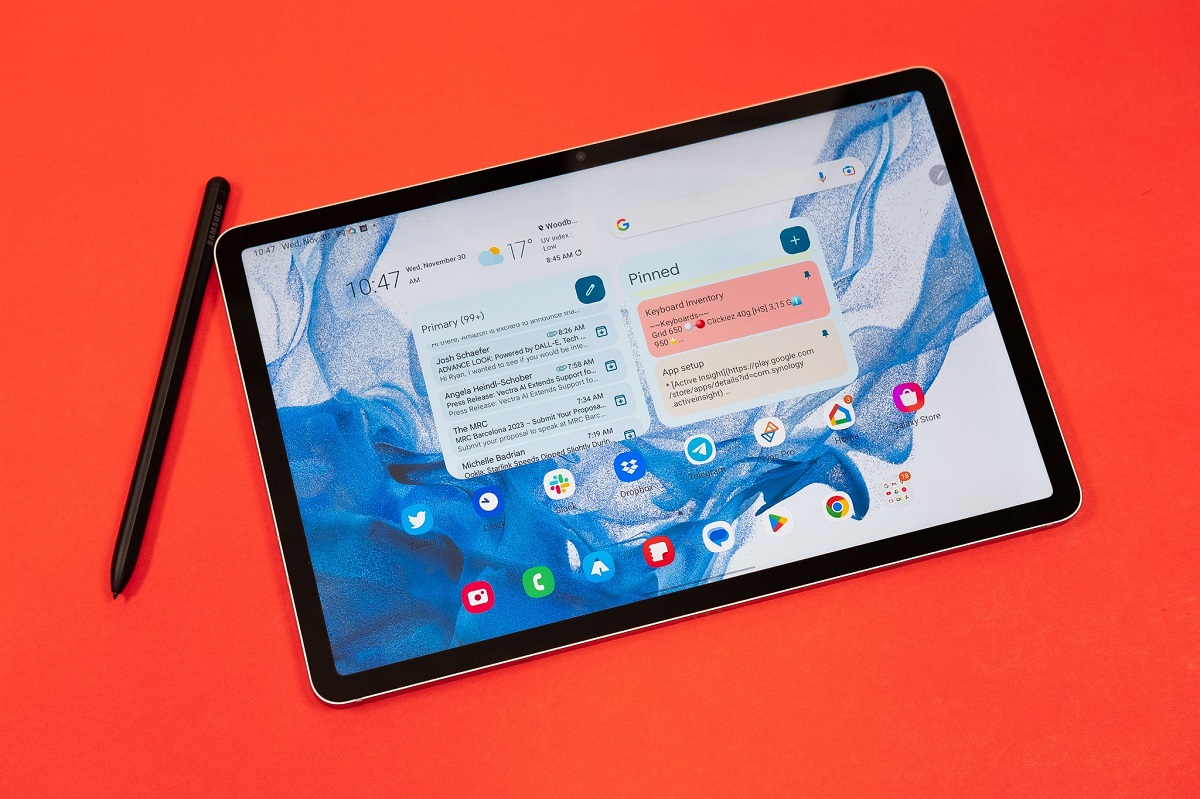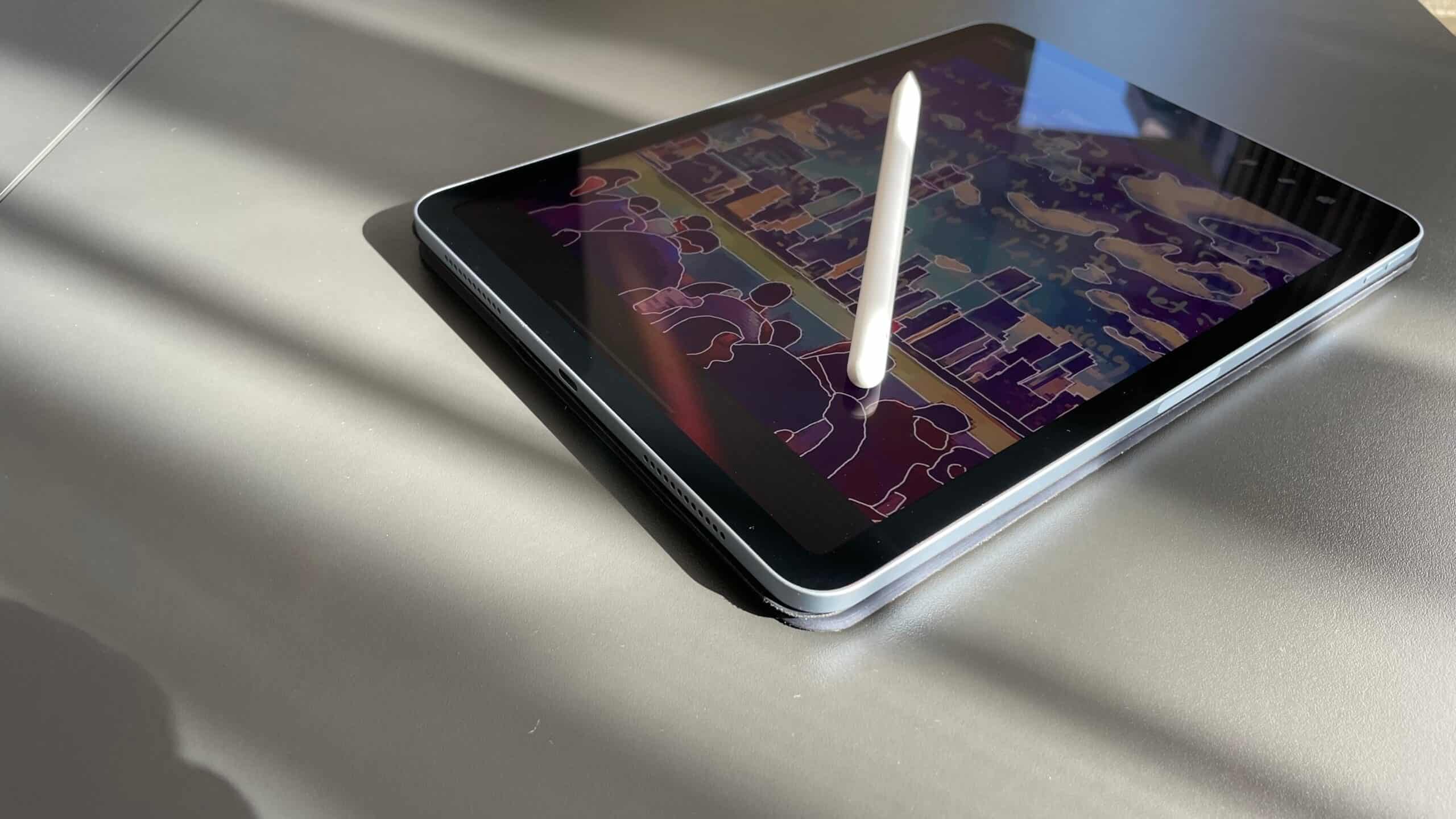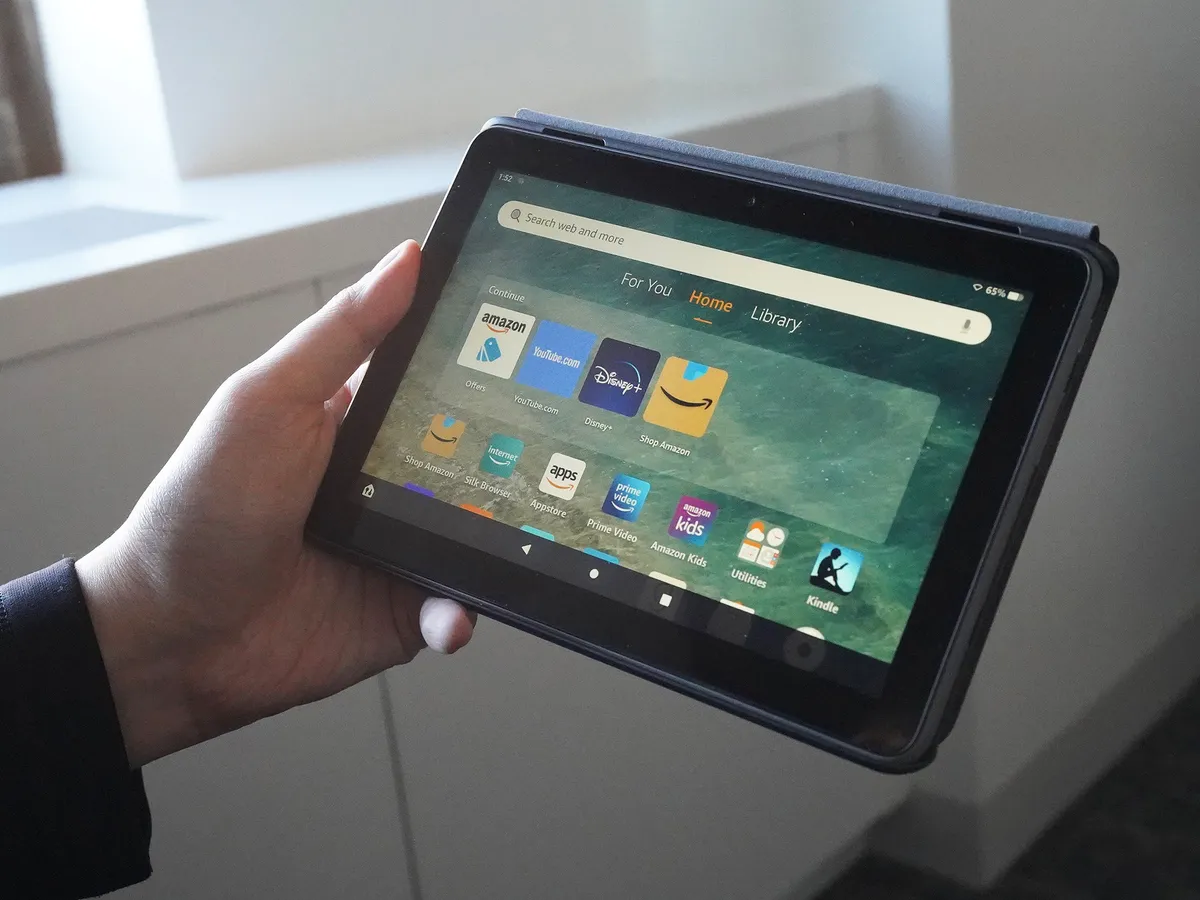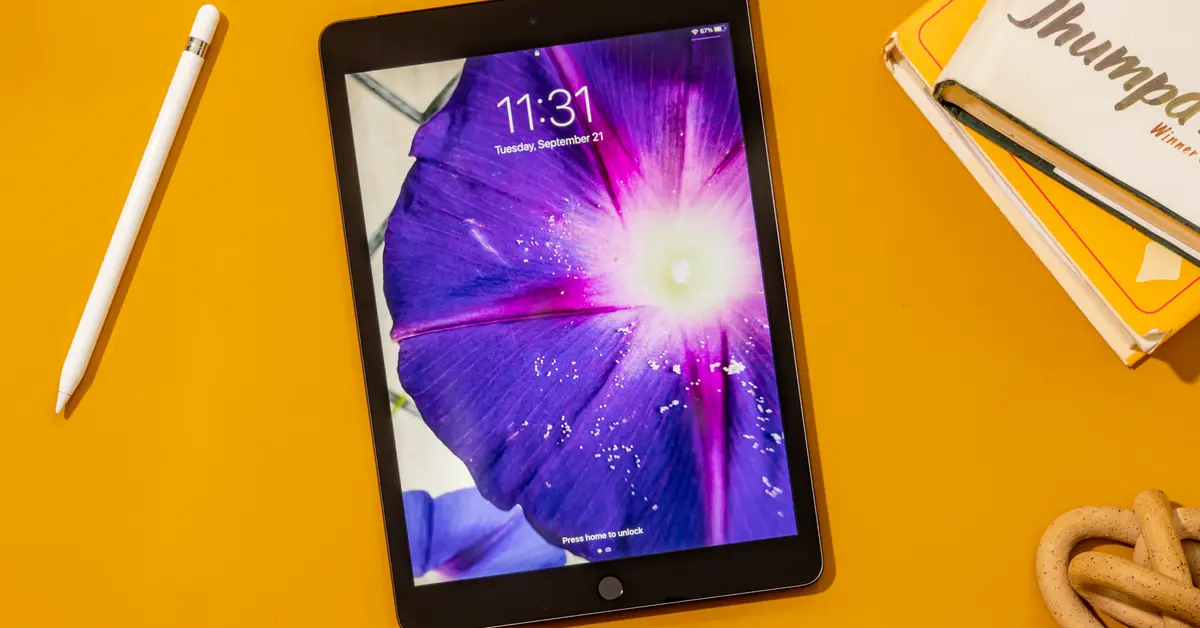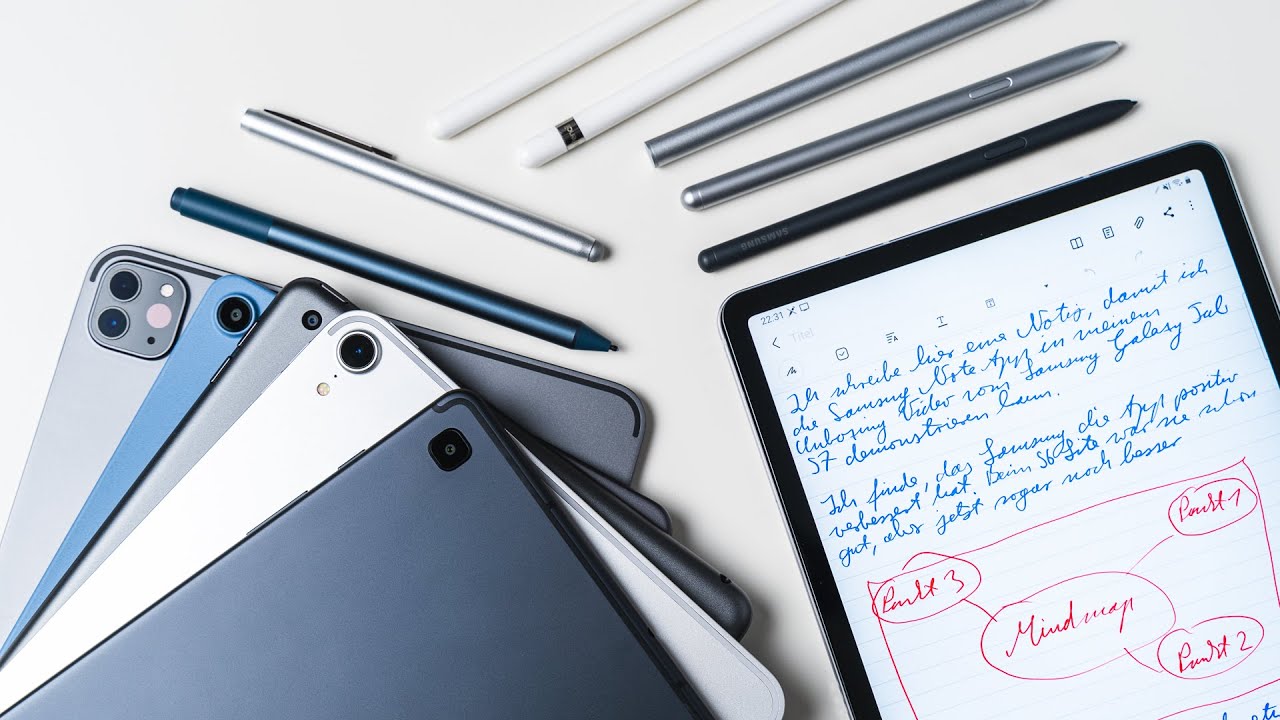Introduction
A tablet is a portable electronic device that has become an essential part of our daily lives. From entertainment to productivity, tablets offer a range of features that cater to our various needs. But have you ever wondered how long a tablet can last? This article explores the factors that affect a tablet’s lifespan and provides tips on how to extend its longevity.
With advancements in technology, tablets have evolved to offer faster processors, more storage capacity, and improved battery life. However, these factors can also impact how long a tablet can function optimally. Understanding the key elements that determine a tablet’s lifespan can help you make informed decisions when purchasing and using a tablet.
Throughout this article, we will dive into the important aspects that influence a tablet’s lifespan. We will discuss how battery life, processing power, storage capacity, operating system updates, build quality, usage habits, and environmental factors play a role in determining how long a tablet can last. Additionally, we will provide practical tips to help you extend your tablet’s lifespan, allowing you to get the most out of your investment.
Whether you are a casual user or rely on your tablet for work, knowing how to maximize its lifespan is crucial. By implementing the strategies outlined in this article, you can ensure that your tablet remains functional and efficient for an extended period.
Factors that Affect Tablet Lifespan
Several factors contribute to the overall lifespan of a tablet. Understanding these factors will help you make informed decisions when choosing a tablet and maintaining its longevity. Let’s explore the key elements that can affect a tablet’s lifespan:
Battery Life: The battery life of a tablet determines how long it can operate without needing a charge. The quality of the battery and the efficiency of power consumption can significantly impact the overall lifespan of the device. Tablets with longer battery life typically last longer, as they can sustain extended usage without frequent charging.
Processing Power: The processing power of a tablet plays a vital role in its overall performance and longevity. Tablets equipped with more robust processors can handle complex tasks more efficiently and are better suited for multitasking. However, high-performance processors can generate more heat, potentially affecting the tablet’s long-term durability.
Storage Capacity: The amount of storage on a tablet determines how many apps, files, and media you can store on the device. Tablets with higher storage capacity can accommodate larger amounts of data and tend to have a longer lifespan, as they can adapt to your changing storage needs over time.
Operating System Updates: Regular software updates from the tablet’s manufacturer are essential for maintaining optimal performance and security. Operating system updates often include bug fixes, performance enhancements, and security patches that can prolong the tablet’s lifespan. Neglecting updates can lead to performance issues and potential vulnerability to security threats.
Build Quality: The build quality of a tablet impacts its durability and resistance to wear and tear. Tablets with sturdy construction, quality materials, and reliable build processes are more likely to withstand daily use and last longer. Factors such as the materials used for the casing, the quality of the display, and the overall design can all contribute to the tablet’s longevity.
Usage Habits: How you use your tablet can play a significant role in its lifespan. Regularly subjecting the device to extreme temperatures, moisture, or physical impact can shorten its lifespan. Proper handling, storing the tablet in a protective case, and avoiding exposure to harsh environments can help prolong its durability.
Environmental Factors: The environment in which you use your tablet can impact its longevity. Extreme temperature variations, high humidity, and exposure to dust and debris can all affect a tablet’s performance and lifespan. It is important to protect your tablet from adverse environmental conditions to ensure optimal performance and longevity.
By considering these factors and making informed choices, such as purchasing a tablet with a reputable brand, high-quality components, and the desired specifications, you can maximize the lifespan of your tablet. Additionally, adopting good usage habits and taking care of your tablet can significantly extend its longevity.
Battery Life: How Long Can Tablets Go Before Needing a Charge?
The battery life of a tablet is a crucial factor in determining how long it can function before requiring a recharge. The battery life varies between different tablet models and manufacturers, depending on several factors.
The capacity of the battery, measured in milliampere-hours (mAh), is a primary determinant of how long a tablet can last on a single charge. Tablets with higher battery capacity tend to have a longer battery life. For instance, tablets with a battery capacity of 5000mAh may last longer than those with a capacity of 3000mAh.
However, battery life also depends on usage patterns and the tablet’s power consumption. Activities that require high processing power, such as gaming or video editing, can drain the battery more quickly. Similarly, tasks that keep the screen on constantly, like video streaming or web browsing, can impact battery life.
In general, tablets can provide anywhere from 5 to 12 hours of battery life, depending on the model and usage. Some high-end tablets are designed to last even longer, with battery lives of up to 15 hours or more. However, it’s important to note that battery life can vary depending on the tablet’s age, usage habits, and battery health over time.
To maximize the battery life of your tablet, consider these tips:
- Adjust the screen brightness: Lowering the screen brightness can significantly reduce power consumption and extend battery life.
- Enable battery-saving mode: Most tablets come with a battery-saving mode that optimizes power usage by adjusting various settings.
- Close background apps: Apps running in the background consume resources and drain battery life. Close any unnecessary apps to conserve power.
- Manage app notifications: Excessive app notifications can use up battery power. Disable notifications for apps that are not essential.
- Use Wi-Fi instead of cellular data: When available, connect to Wi-Fi networks instead of relying on cellular data. Wi-Fi consumes less power.
- Turn off unnecessary connectivity features: Bluetooth, GPS, and NFC can drain battery life when not in use. Disable these features when not needed.
Keeping your tablet’s battery healthy is also important for maintaining its longevity. Avoid fully draining the battery and instead aim to keep it between 20-80% charge whenever possible. Periodic full charges and discharge cycles can also help calibrate the battery.
Remember, the battery life of a tablet is influenced by various factors, including battery capacity, usage patterns, screen brightness, and connectivity settings. By following these tips and optimizing your tablet’s battery usage, you can enjoy extended battery life and make the most of your device.
Processing Power: Does It Affect Tablet Longevity?
When it comes to tablet longevity, the processing power of the device plays a crucial role. The processing power refers to the speed and efficiency at which a tablet can perform tasks, handle multitasking, and run resource-intensive applications. But how does processing power affect the overall lifespan of a tablet?
Tablets with higher processing power generally last longer because they can handle software updates and new applications more efficiently. As technology advances, the software becomes more demanding, requiring faster processors to run smoothly. Tablets with outdated or low-power processors may struggle to keep up with the latest software updates, which can lead to reduced performance and limited functionality.
Furthermore, tablets with higher processing power are better equipped to handle multitasking. They can switch between apps seamlessly and handle resource-heavy tasks without significant slowdowns. This ability to handle multitasking without overheating or straining the processor can contribute to the overall longevity of the tablet.
On the other hand, tablets with lower processing power may experience performance issues over time. As app developers optimize their software for newer and more powerful devices, older tablets with slower processors may struggle to keep up. This can result in laggy performance, longer loading times, and even app crashes.
It’s also worth noting that higher processing power can generate more heat. While tablets have built-in mechanisms to prevent overheating, using resource-intensive apps for extended periods can put a strain on the tablet’s cooling system. Over time, excessive heat can impact the internal components and potentially shorten the tablet’s lifespan.
To get the most out of your tablet’s processing power and extend its longevity, there are several steps you can take:
- Choose a tablet with a processor that meets your usage requirements. Consider the type of tasks you will be performing and opt for a tablet with a processor capable of handling those tasks efficiently.
- Avoid overburdening the processor by running too many resource-intensive apps simultaneously. Close unnecessary apps running in the background to free up system resources.
- Regularly update the tablet’s operating system and applications. Software updates often include performance optimizations and bug fixes that can enhance the efficiency of the processor.
- Avoid exposing the tablet to extreme temperature conditions, as excessive heat can negatively impact the processor and overall performance.
By considering the processing power of a tablet and taking steps to maximize its performance and longevity, you can ensure that your device remains capable of running the latest software and handling your computing needs for a longer period.
Storage Capacity: How Much Can Your Tablet Handle?
The storage capacity of a tablet refers to the amount of data that can be stored on the device. It plays a vital role in determining how long a tablet can last and how well it can adapt to your storage needs over time.
Tablets come with varying storage capacities, typically ranging from 16GB to 512GB or more. The storage capacity you choose can directly impact the longevity of your tablet. A tablet with higher storage capacity allows you to store more apps, files, photos, videos, and documents without running out of space quickly.
Over time, as you download new apps, capture more photos, and record videos, the storage capacity of your tablet becomes increasingly important. Insufficient storage space can lead to decreased performance, slower app loading times, and limited functionality.
However, it’s worth noting that the actual available storage on a tablet is often less than the advertised capacity. A portion of the storage is reserved for the operating system and pre-installed software. Therefore, it’s essential to consider this when choosing a tablet.
One way to ensure that your tablet can handle your storage needs is to opt for a model with expandable storage. Many tablets support the use of microSD cards, allowing you to increase the storage capacity by adding an additional card. This flexibility allows you to adapt your tablet’s storage as your needs evolve.
When managing your tablet’s storage capacity, here are some tips to consider:
- Regularly remove unnecessary files and apps to free up space. Delete photos and videos that are no longer needed and uninstall applications that are not frequently used.
- Utilize cloud storage services to store files and media. Services like Google Drive, Dropbox, or iCloud offer additional storage options and can help free up space on your tablet.
- Manage your app installations. Some apps may take up a significant amount of storage, particularly those that include large media files. Consider whether you truly need these apps or if there are alternatives with lower storage requirements.
- Be mindful of the size of media files you capture or download. If storage space is limited, opt for lower resolution or compressed versions of photos and videos.
By effectively managing your tablet’s storage capacity and being mindful of your storage needs, you can ensure that your tablet remains functional and adaptable in the long run. Whether it’s for work, entertainment, or personal use, having ample storage can enhance your tablet experience and prolong its overall lifespan.
Operating System Updates: Are They Essential for Longevity?
Operating system updates are a critical aspect of maintaining the longevity of your tablet. They play a crucial role in improving performance, enhancing security, and ensuring compatibility with the latest apps and software updates. But why are these updates essential for the overall lifespan of your tablet?
One of the primary reasons operating system updates are crucial is performance optimization. Manufacturers continuously work on optimizing the software to run more efficiently on their devices. Updates often include bug fixes and performance enhancements that can improve the overall speed, responsiveness, and stability of your tablet.
Besides performance enhancements, operating system updates also address security vulnerabilities. Cyber threats are constantly evolving, and hackers are always looking for new ways to exploit security loopholes. Regular updates ensure that your tablet is equipped with the latest security patches, protecting your device and data from potential threats.
Additionally, operating system updates offer compatibility with new applications and software updates. As app developers release new versions of their software, they often require the latest operating system version to ensure optimal performance and functionality. By keeping your tablet’s operating system up to date, you can ensure that you have access to the latest features and capabilities.
However, it’s important to note that installing operating system updates on older tablets can sometimes lead to performance issues. Newer software versions may demand more system resources, such as processing power and memory, which older tablets may struggle to provide. In these cases, it’s essential to weigh the benefits of the update against the potential performance impacts.
To make the most of operating system updates and ensure the longevity of your tablet, consider the following:
- Enable automatic updates: Most tablets offer the option to automatically download and install operating system updates. Enabling this feature ensures that you stay up to date without having to manually check for updates regularly.
- Backup your data: Before installing any updates, make sure to back up your important data. Although rare, there is always a slight risk of data loss during the update process. Having a backup ensures that you can recover your data if anything goes wrong.
- Keep apps updated: In addition to operating system updates, regularly update your installed apps. App updates also include bug fixes, performance improvements, and security enhancements.
- Monitor performance after updates: After installing an operating system update, monitor your tablet’s performance. If you notice any significant performance issues, consider rolling back to a previous version or consulting with the manufacturer for support.
By keeping your tablet’s operating system up to date and following these best practices, you can ensure that your device remains secure, performant, and compatible with the latest software, maximizing its overall longevity.
Build Quality: How Does It Impact the Tablet’s Lifespan?
The build quality of a tablet is a critical factor in determining its overall lifespan. The build quality refers to the materials used, the construction methods employed, and the overall durability of the device. But how exactly does build quality impact the lifespan of a tablet?
Tablets with high-quality build materials, such as aluminum alloys or reinforced plastics, tend to be more durable and resistant to wear and tear. These materials can withstand daily use and provide better protection against accidental drops, scratches, and other physical damage. On the other hand, tablets with lower build quality or made of cheaper materials may be more prone to damage, potentially shortening their lifespan.
In addition to the materials used, the construction design and techniques also play a vital role in the tablet’s longevity. Tablets with solid and reliable construction, where components are securely fit together, are less likely to experience mechanical failures or loose connections over time.
Furthermore, the quality of the display can impact the tablet’s overall lifespan. Tablets with displays made of scratch-resistant and shatterproof glass, such as Corning Gorilla Glass, tend to be more durable and resistant to damage. Such displays can withstand regular use without showing signs of wear or cracks, ensuring a longer lifespan for the tablet.
Water and dust resistance is another aspect of build quality that can prolong a tablet’s lifespan. Tablets with IP68 or similar ratings offer protection against water and dust intrusion. This is particularly beneficial if you often use your tablet in outdoor or rugged environments. Such protection shields the internal components from potential damage and increases the tablet’s overall durability.
However, it’s worth noting that even tablets with high build quality are not entirely immune to damage. Accidents can still happen, and it’s essential to take proper care of your tablet to maximize its lifespan. Using protective cases, screen protectors, and avoiding exposure to extreme temperatures and moisture can help maintain your tablet’s build quality and extend its longevity.
To ensure that your tablet’s build quality positively impacts its lifespan, consider the following:
- Choose a tablet from reputable manufacturers known for their high build quality standards.
- Read reviews and check user feedback on the tablet’s durability and construction.
- Invest in a protective case or cover to shield your tablet from accidental drops and scratches.
- Handle your tablet with care and avoid subjecting it to unnecessary physical stress.
- Follow the manufacturer’s guidelines for cleaning and maintenance to prevent damage to the build materials.
By selecting a tablet with solid build quality and taking appropriate measures to protect it, you can enhance its lifespan and ensure that it remains functional and reliable for a longer period.
Usage Habits: How You Use Your Tablet Matters
The way you use your tablet can greatly impact its overall lifespan. Your usage habits determine how much strain is placed on the device, how well it performs over time, and how long it can last. Developing healthy usage habits can help maximize your tablet’s longevity. So, let’s explore how your usage habits can make a difference.
Firstly, handling your tablet with care is crucial. Avoid dropping or mishandling the device, as even minor accidents can result in physical damage that may impact its functionality and lifespan. Using a protective case or cover can provide an extra layer of protection against accidental drops and scratches.
Proper charging practices also play a significant role in the lifespan of your tablet’s battery. Overcharging or continually draining the battery to 0% can strain its capacity over time. It’s ideal to keep the battery between a 20-80% charge whenever possible. Additionally, using the manufacturer’s recommended charger and avoiding cheap, non-certified cables and accessories can help prevent damage to the battery.
Another vital aspect of usage habits is avoiding exposure to extreme temperatures. High temperatures can cause battery degradation, slower performance, and potential damage to internal components. Likewise, extremely low temperatures can affect the device’s responsiveness and overall performance. It’s best to keep your tablet in a temperature-controlled environment and avoid leaving it in direct sunlight or cold conditions for extended periods.
Regularly cleaning your tablet is essential for both hygiene and longevity. Dust, debris, and fingerprints can accumulate on the screen and in ports over time, potentially impairing performance and causing connectivity issues. Use a microfiber cloth or screen-cleaning solution recommended by the manufacturer to clean the screen and a soft brush or compressed air to remove any debris from ports and vents.
Controlling app usage and multitasking can also impact the lifespan of your tablet. Running multiple resource-intensive apps simultaneously can strain the processor and drain the battery faster. Likewise, keeping unnecessary apps running in the background can consume system resources and potentially slow down the tablet’s performance. Close unused apps and manage your multitasking to optimize system resources and maximize efficiency.
Additionally, avoiding exposure to moisture and liquids is crucial for tablet longevity. Tablets are not waterproof, and even a small amount of liquid can seep into the device through ports or buttons, causing internal damage and potentially rendering the tablet inoperable. Keep liquids away from your tablet and use caution when using it near water sources.
By adopting these usage habits, you can greatly enhance the lifespan of your tablet. Remember to handle it with care, charge it properly, avoid extreme temperatures, keep it clean, manage your app usage, and protect it from moisture. With these practices in place, you can enjoy a longer-lasting, reliable tablet that continues to meet your needs.
Environmental Factors: How Do They Impact Tablet Lifespan?
Environmental factors can significantly impact the lifespan of your tablet. Tablets are electronic devices that are sensitive to their surrounding conditions, and exposure to certain environmental factors can affect their performance, functionality, and overall longevity. Understanding these factors can help you take appropriate measures to protect your tablet.
Extreme temperatures are one of the primary environmental factors that can impact a tablet’s lifespan. Exposure to high temperatures, such as leaving the tablet in a hot car or direct sunlight for extended periods, can cause overheating, screen damage, and even internal component failure. Similarly, extremely low temperatures can affect the tablet’s responsiveness and potentially damage the battery. It’s best to store and use your tablet in a temperature-controlled environment to ensure optimal performance and prolong its lifespan.
Moisture and humidity are another concern for tablet longevity. Tablets are not waterproof, and exposure to liquids can cause damage to internal components, leading to malfunctioning or complete failure. Additionally, high humidity levels can lead to condensation inside the tablet, damaging the circuitry. It’s important to keep your tablet away from liquid sources and in environments with controlled humidity levels.
Dust and debris can also negatively impact a tablet’s lifespan. Over time, dust particles can accumulate in the device’s ports, vents, and other openings, leading to connectivity issues, overheating, and potential damage to internal components. Regular cleaning of your tablet using a microfiber cloth, compressed air, and recommended cleaning solutions can help prevent the buildup of dust and debris and ensure optimal performance.
Exposure to excessive vibrations and mechanical shocks can also impact a tablet’s lifespan. Tablets are designed to withstand regular use, but severe shocks or drops can cause damage to internal components or connections. It’s important to handle your tablet with care and use protective cases or covers to provide an additional layer of shock absorption.
Additionally, electromagnetic interference (EMI) should be considered. Strong magnetic fields, such as those generated by certain electronic devices or power lines, can interfere with a tablet’s internal components, causing performance issues or even permanent damage. Minimizing exposure to strong electromagnetic fields can help protect the tablet’s sensitive electronics.
By being mindful of these environmental factors, you can protect your tablet and extend its lifespan. Store and use your tablet in a temperature-controlled environment, protect it from moisture and liquids, keep it clean, handle it with care, and minimize exposure to strong vibrations and electromagnetic interference. Taking these precautions will help ensure that your tablet remains functional and reliable for a longer period.
Tips to Extend Your Tablet’s Lifespan
If you want to maximize the lifespan of your tablet and ensure it continues to meet your needs for an extended period, consider implementing these tips:
- Use a screen protector: Applying a screen protector can help prevent scratches and smudges on your tablet’s display, keeping it looking new and prolonging its lifespan.
- Invest in a protective case: A sturdy protective case can provide an extra layer of protection against accidental drops, bumps, and scratches, safeguarding your tablet from potential damage.
- Keep your tablet updated: Regularly update your tablet’s operating system and installed apps to ensure you have access to the latest features, bug fixes, and security patches. This helps maintain optimal performance and protects against potential vulnerabilities.
- Optimize storage: Regularly clean up your tablet’s storage by removing unnecessary files, uninstalling unused apps, and utilizing cloud storage services. This not only helps free up space but also improves performance.
- Manage app usage: Avoid excessive multitasking and close unnecessary background apps to conserve system resources and optimize overall performance.
- Properly charge your tablet: Follow the manufacturer’s guidelines for charging your tablet. Avoid overcharging or fully draining the battery and use certified chargers and cables to prevent damage.
- Take care of the battery: Avoid exposing your tablet to extreme temperatures, which can adversely affect the battery’s performance. Keeping your tablet in a temperature-controlled environment can help extend the battery’s lifespan.
- Maintain cleanliness: Regularly clean your tablet’s screen, ports, and vents using recommended cleaning solutions and tools to prevent dust buildup, maintain optimal performance, and prevent connectivity issues.
- Handle with care: Avoid dropping or mishandling your tablet, as physical damage can significantly impact its functionality and longevity. Treat your tablet with care and be mindful of how you transport and store it.
- Protect from moisture and liquids: Keep your tablet away from liquid sources and use caution when using it near water. Liquid exposure can cause irreparable damage to internal components.
By incorporating these tips into your tablet usage habits, you can extend its lifespan and ensure that it remains a reliable and efficient device for a longer period. Proper maintenance, protection, and responsible usage will help you get the most out of your tablet investment.
Conclusion
Understanding the factors that impact a tablet’s lifespan and adopting good habits can help you maximize the longevity of your device. From battery life and processing power to storage capacity and build quality, each component plays a crucial role in determining how long your tablet will last. Additionally, factors such as operating system updates, usage habits, and environmental considerations should not be overlooked.
By following the tips outlined in this article, such as optimizing your tablet’s battery usage, keeping the operating system and apps up to date, and protecting your tablet from physical damage and environmental factors, you can ensure that your tablet remains functional, reliable, and efficient for an extended period.
Remember, taking care of your tablet involves more than just using it. It’s essential to handle it with care, protect it from moisture and extreme temperatures, and maintain cleanliness. By incorporating these practices into your routine, you can extend the lifespan of your tablet and get the most out of your investment.
Ultimately, a combination of choosing a tablet with excellent build quality, considering processing power and storage capacity, and implementing proper maintenance and usage habits will give you the best chance of enjoying your tablet for years to come. As technology continues to advance, it’s important to stay informed about the latest updates and best practices to ensure your tablet remains relevant and performs optimally.
So, make the most of your tablet by understanding its capabilities, implementing these tips, and adapting your usage habits accordingly. By doing so, you can enjoy a long-lasting tablet that continues to meet your needs, whether it’s for work, entertainment, or staying connected.







